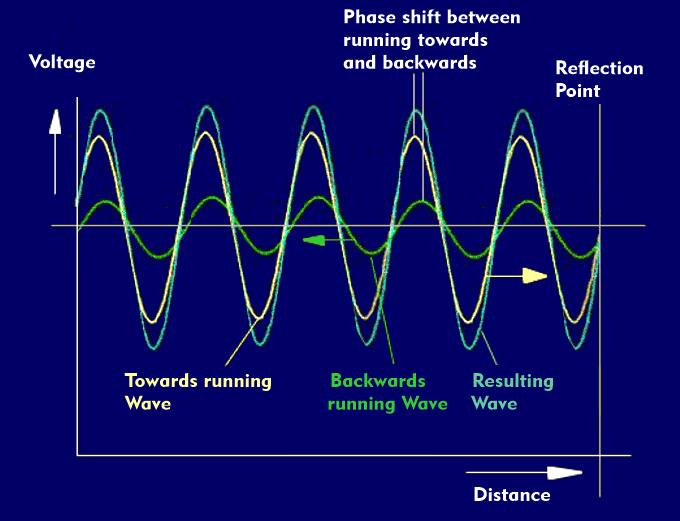
<< radio home
<< index
by disinfoniacs #69 & #1
>>>>

Standing Wave Ratio (SWR) is a measure of the efficiency of an antenna system, which can be explained using some basic physics. In a radio antenna system, energy is transferred from the transmitter to the antenna through a transmission line. Ideally, all of the energy that is sent out by the transmitter should be efficiently radiated by the antenna, which means that the impedance of the transmitter and transmission line should match the impedance of the antenna. When the impedance of the transmitter and transmission line do not match the impedance of the antenna, some of the energy that is sent out by the transmitter is reflected back and causes interference. This interference creates standing waves, which can lead to a decrease in the efficiency of the antenna system. The SWR measures the ratio of the maximum and minimum voltages on a transmission line, which helps to determine the efficiency of the antenna system and ensure smooth transmission of radio signals.
SWR meters are designed to measure SWR on different frequency bands. It's important to choose the right meter for your specific frequency and power level. The SWR meter is usually placed in series with the feed line, between the transmitter and antenna, to provide the most accurate reading. To take an SWR measurement, the transmitter is keyed while the SWR meter observes the reflected power from the antenna. The SWR reading is then displayed on the meter, and adjustments can be made to the antenna and transmission line to achieve the desired SWR.
In conclusion, a properly calibrated SWR measurement is essential to optimize the transmission of radio signals and ensure clear and reliable communication.
<< previous lesson | next lesson >>
---
<< radio home
<< index
